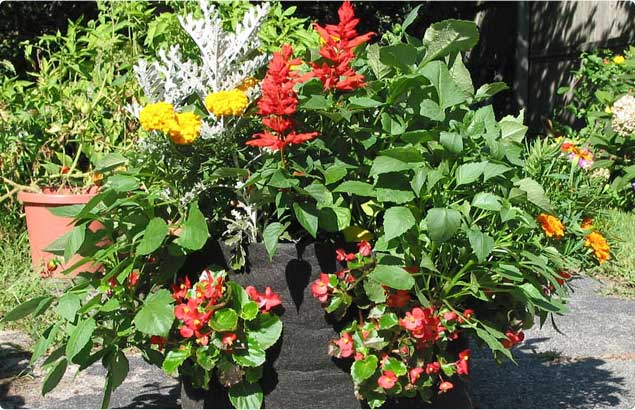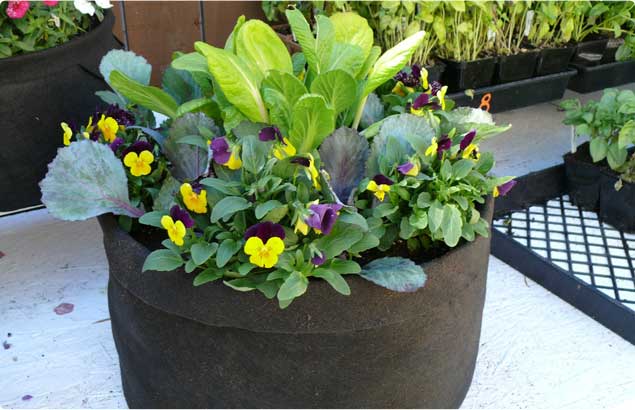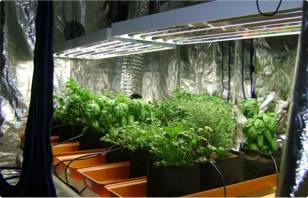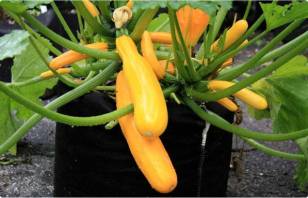Growing Hydroponic Strawberries
“Strawberry Fields Forever” wasn’t just a psychedelic hit by The Beatles. It’s a technique you can put into practice, yielding sweet, juicy hydroponic strawberries year-round. “But won’t the snow and ice ruin my strawberry garden?” you ask. Indeed. That’s why we’re learning how to grow strawberries indoors.
Contain Yourself
The first step to cultivating hydroponic strawberries is procuring optimum containers. Smart Pots by High Caliper Growing provide the perfect growth vessel for growing strawberries. These fabric aeration containers facilitate a process known as “air pruning.” In a normal plastic pot, a plant’s roots will circle the bottom of the container seeking an opening through which to penetrate. Because plastic pots are solid, plants often become “root bound.” This occurs when tangled roots begin to strangle the plant, causing disease and deficient nutrient delivery.
In Smart Pots, roots naturally air prune themselves. When the roots approach the outer boundary of the fabric pot, they branch into hundreds of small, fibrous roots. This optimum root structure delivers the hydroponic nutrients your plants need to survive and thrive. It also allows your nutrient solution to penetrate the growth medium. But more about that later.
Selecting Your Growth Medium and Preparing to Plant
Once you obtain plants and containers, wash the hydroponic strawberries’ roots to remove the soil. Once this is complete, fill your containers about halfway with a growth medium. Numerous options are available, but vermiculate is a safe and inexpensive choice. Place your plants into the partially filled containers and cover the remaining roots with vermiculite.
Make Room
Hydroponic strawberries need plenty of room to thrive. Optimum spacing calls for about six inches’ distance from the crown of one plant to the next. To achieve the maximum yields, utilize shallow, soft-sided containers. This will allow your hydroponic strawberries to create “runners,” also known as “stolons.” These specialized roots emanate from mature plants, and penetrate the growth medium to produce new specimens. Over time, and with proper nutrient application, stolons can produce a thickly matted strawberry bed that produces year-round.
See the Light
Hydroponic strawberries grow best in full light. Place them in a window that receives at least six full hours of sunlight per day. If this is not possible, consider installing LED or hi-pressure sodium fixtures. If you’re using high-pressure sodium, ensure that you have sufficient ventilation in your grow room. You don’t want your precious hydroponic strawberries wilting in excessive heat!
But don’t forget – darkness is equally as important. Your plants will require 6 to 8 hours of darkness each night to fully recover and thrive.
Don’t Forget Feeding Time
Like all-fruit bearing crops, your strawberries will require hydroponic nutrients. Now that your plants are situated with plenty of light, you’ll want to flood their roots systems with nutrient solution. But don’t overdo it. Over-hydrating leads to rot. Soak your roots systems in your Smart Pot containers for about ten minutes a day, allowing the solution to completely penetrate the container. Once this is done, allow your Smart Pot to drain onto a plastic surface (typically an ebb and flow table) and allow the remaining fluid to drain into your reservoir. Check the water level daily to ensure that your hydroponic strawberry roots are receiving sufficient fluid levels. With attention to details and a little luck, you’ll be dining on succulent hydroponic strawberries in about four to eight weeks!







Do I have to use special strawberry plugs or are the ones at garden shops designed to plant in soil work. I ask because I can not seem to find any that are hydroponic specific
thanks
al